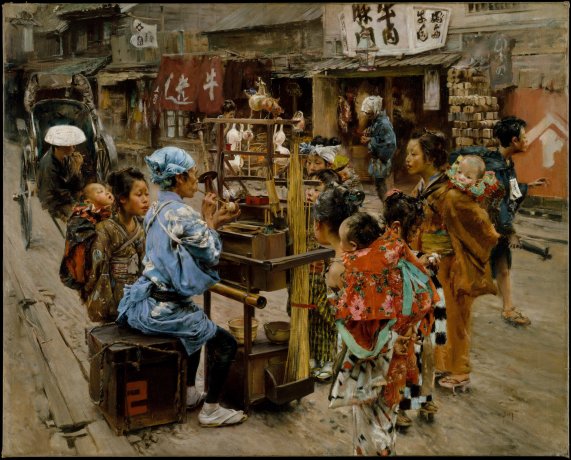 ロバート・フレデリック・ブルーム画「飴屋」1893年 出典:ウィキペディア
ロバート・フレデリック・ブルーム画「飴屋」1893年 出典:ウィキペディア1800年代初頭に大阪で始まった飴細工は、見た目以上にスキルが要求されます。
A tradition said to have started in Osaka in the early 1800s, candy-animal
making requires more skill than is apparent.
飴を準備することさえコツがいります。
Just preparing the candy is tricky.
もち米とデンプンを注意深く蒸して独特の透明感がある柔らかい生地にします。それは手でつまんでこねることができます。
Glutinous rice (mochi gome) and potato powder are boiled carefully to
a specific transparent doughy texture, and then hand pulled and kneaded.
この工程の中で空気に触れることで、きれいな白になります。
Contact with the air during this process produces the pure white color.
それを大きな玉に丸めると、使う準備ができるまでに固まり出します。
It is then rolled into a huge ball and allowed to harden until ready for use.
あめ細工の手押し車にある箱に入った炭団が大きな飴を柔らかい塊に温めます。
Tadon (charcoal) in the box of the amezaiku's cart heats the large candy ball into a pliable mass.
職人さんは、熱い白い飴の小さな塊を手の上にすくい取とって丸めます。そして剃刀の形状をした毛抜きばさみ(握りバサミ)であちらこちらに切れ込みを入れて鳥や動物をつくります。
Artisan scoops a wad of hot white candy in his hand, rolls it into a ball, and snips it here and there with razor-sharp tweezer-scissors to make bird and animal.
動物は飴が硬くなる前に形を整えなければなりません。ウサギでしたら例えば30秒かかります。3分が限度です。
Animals must be formed quickly before the candy hardens - a rabbit, for
instance, takes about thirty seconds.3 minutes is the limit.
器用さと芸術的センス、そしてたくさんの想像力が必要です。
Dexterity, an artistic sense and a lot of imagination are needed.
かつてたくさんの動物がガラスのように吹いて膨らませて作られていました。しかし、衛生上の理由で1973年に禁止されました。
Many of the animals used to be blown like glass, but this was prohibited
around 1973 for hygienic reasons.
江戸時代に始まった飴細工は鳥が主なモチーフであったため、「飴の鳥」とも呼ばれました。
Amezaiku that started in the Edo period was also called "candy bird" because
the bird was the main motif.
さらに、職人が街で売りあるき、客の要望の動物や花などをその場でつくる職人芸を庶民が楽しみました。
In addition, when artisans sell in town, the common people enjoyed craftsmanship who creates animals and flowers etc as requested by guests on the spot.
飴細工は90℃程まで熱してやわらかくした飴を、素手と握りバサミ一本を使って形を作っていきます。
Artisan will make anezaiku made from candy softened by heating up to about 90
℃, using a bare hand and a single pair of scissors.
葭の先に飴をつけて口で吹いて中空の玉をつくり、それを加工して整形し、最後に着色しました。
I put a candy at the end of the reed, blowing it in the mouth to make a
hollow ball, processing it, shaping it, and finally coloring.
 ロバート・フレデリック・ブルーム画「飴屋」1893年 出典:ウィキペディア
ロバート・フレデリック・ブルーム画「飴屋」1893年 出典:ウィキペディア
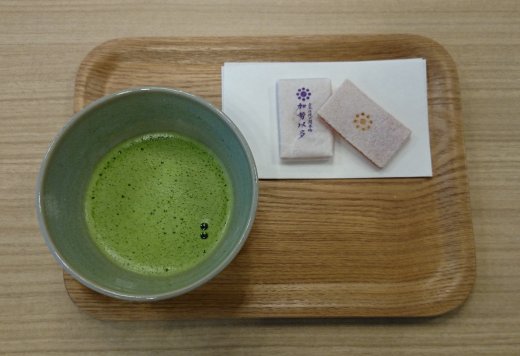
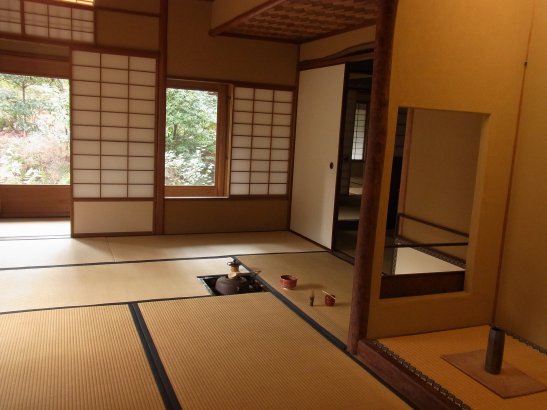
古代の日本では甘いものはとても貴重で、木の実や果物が高く評価されました。
In ancient times, very few sweet things
were available in Japan, so nuts and fruits were highly prized.
今でも果物を「水菓子」と呼びます。
The
fruits are still called “Mizu-gasi 水菓子 Water sweets” now.
7世紀以降、「遣隋使」や「遣唐使」によって日本に伝わった菓子は、「唐菓子」と呼ばれました。
Since
the 7th century, the confectionery that has been transmitted by the
“Ken-Zui-shi 遣隋使 Mission to Zui of Chine” and the
“Ken-Tou-shi 遣唐使 Mission to Tang of China” were called “Tou-gashi
唐菓子Tang confectionery”.
鎌倉時代にはお茶が中国の宗から伝わりました。
During the “Kamakura-jidai
Tea cultivated
in Japan, the habit of drinking tea spread, and making of “Tenshin 点心 Sweets” for tea ceremony also developed.
The raw
material of the “Youkan 羊羹Sweet” that was
transmitted from China during the “Kamakura-jidai Period” to the
“Muromachi-jidai Period (from 12th century to 15th
century) originally sheep meat, but in Japan it was devised to use red beans.
16世紀半ばの室町時代にはポルトガル、スペイン、オランダの南蛮船によって、「南蛮菓子」が日本に伝わりました。
In the
mid-16th century, European (Portugal, Spain, and the Netherlands) trading ships
arrived to Japan with “Namban-gashi 南蛮菓子 European
confections”.
“Namban-gashi
European confections” used a lot of sugar which had been rare in Japan at that
time.
Japanese
confectionery connected with the tea ceremony, traditional aristocratic culture
and various annual events.
As a
result many beautiful confectionery were developed and had been called “Edible
art”.
High-grade confectionery using lots of sugar became very popular in the middle of the “Edo-jidai
開国によってチョコレートやビスケット、ケーキ、キャンディーなどの「洋菓子」が伝えられ、日本の菓子を「和菓子」と呼ぶようになりました。
With the
opening of the country to the world, “Yougashi 洋菓子Western confectionery” such as chocolate, biscuits, cakes and
candies were introduced to Japan, and Japanese confectionery came to be called “Wagashi
和菓子Japanese confectionery”.
“Wagashi
和菓子Japanese confectionery” include “Mochi-gashi 餅菓子 Cake”, “Youkan 羊羹 Sweet”, “Manjuu 饅頭 Sweet”, “Monaka 最中 Sweet”, “Rakugan 落雁 Sweet”, “Sembei 煎餅 Rice crackers” and
so on.
ヨーロッパから伝えられ、日本で独自の発展を遂げた「南蛮菓子」も現在では「和菓子」の一種です。
“Namban-gashi
南蛮菓子confectioner” which were transmitted from Europe and achieved their
own development in Japan, are also a type of “Wagashi 和菓子 Japanese confectionery” now.
「和菓子」は「洋菓子」と比べて油脂や香辛料、乳製品を使うことが少なく、米・麦などの穀類、小豆・大豆などの豆類、葛粉などのデンプン、および砂糖を主原料としたものが多いのが特徴です。
Compared with “Yougashi
In
particular, there are many items where processing of beans is important.
「茶の湯」との関係も深く、緑茶に合わせることを想定して作られているものが数多くあります。
The
relationship with “Cha-no-yu 茶の湯 Tea Ceremony”is also deep, and
there are many products that are designed to match green tea.
“Wagashi
和菓子”, have a delicate sweetness that dissolves in the mouth.
味覚だけでなく目を楽しませることを意図して、四季の変化を反映して作られます。
“Wagashi”
are intended to please the eye with designs that reflect changing of the four
seasons as much as the taste.
So many
kinds of “Wagashi” are produced at specific times
of the year.
Spring “wagashi”
are formed into shapes that reflect a flood of energy and glory of this season.
透明なジェリー(寒天)は、涼しげな見た目で暑い夏に清涼感を与えるために使用されます。
Transparent
“Kanten 寒天 Jelly” is used to give treats with
cooling appearance in hot summer.
One of summer “wagashi” is intended to
evoke the feeling of waterweed waving in a chilly stream.
伝統的な秋の「和菓子」は、変わっていく葉や季節の果物の色を反映しています。
Traditional autumn “wagashi” reflect the colors of the turning leaves and seasonal fruits.
“wagashi” that image petals of “Ume
Traditional
“wagashi” are almost always made by hand.
“Wagashi
shokunin 和菓子職人 Confectionery cook” expresses the beauty of nature from various materials
with delicate touch.
赤または青の漢字で美しく描かれた四角い布が、夏になると多くのお店の前に静かに吊りされられます。それは、イチゴやレモン、メロンのシロップをかけた削った氷を売っていることを表しています。
A square white cloth amblazoned with a red or blue kanji character for
ice still hangs in front of many shops in the summer, indicating that they
sell chipped ice topped with strawberry, lemon, or melon syrup.
奈良時代、冬に採った氷を氷室の中で夏まで蓄えておきくことが定着しました。
平安時代の枕草子に、かき氷のルーツと考えられる削り氷(けつりひ)が登場します。
氷は真冬に自然に凍ったものを採冰し、氷室と呼ばれる平安時代の貯蔵庫で熱い夏の数か月間、注意深く保管されます。
Ice made from water that was naturally frozen in the middle of winter
and carefully preserved through the hot monthes of summer in Heian Period
storehouses called himuro.
夏の終わりまでには3分の2の氷が溶け、朝廷の貴族たちの優雅な生活のために貴重な3分の1が残ります。
Up to two-thirds of the ice would melt before the end of summer, leaving
a precious third for the enjoyment of the court people.
江戸時代には、多くの大名が自分自身の氷室を所有するようになりました。そして、明治時代に氷の需要がさらに高まり、天然氷のライバルとして人工による生産が始まりました。
By the Edo Period (1603-1868), many local lords owned their own ice-storage rooms, and the demand for ice increased so much by the Meiji Era (1868-1912) that its artificial producton started to rival of natural ice.
秩父周辺の山は天然氷を作る上で理想的です。
The mountains surrounding the Chichibu area make it ideal for natural ice.
冬の間、ここは清涼で空気が乾燥し、しばしば本州の北部よりも夜の気温が下がります。
Winter days here are clear, the air is dry, and the lowest temperatures
at night are often lower than those of northern Honshu.
自然の氷は天然氷と呼ばれ、生産している蔵元は極僅かしかありません。
Natural ice is called tennengori, there are only a few places in Japan
that still harvest it..
現在、天然氷を製造している蔵元は、関東周辺では栃木県に3か所、山梨県に2か所、埼玉県に1か所。(ウィキペディア)
山間に造った池に、湧水などの良質な水を引き込んで、ゆっくりと自然の寒さで凍らせることで、透明で硬く溶けにくい天然氷ができます。
池に水を引き入れてからマイナス6度からマイナス7度の天候で、切り出せる15センチの厚さにするまで2週間かかります。
Once the ponds are filled it takes two weeks of minus six-to minus seven-degree weather to freesze water to a thickeness of fifteen centimeters.
湧水はろ過する必要があり、そして太陽の光を遮り、ゴミや埃を除去しなければなりません。
The mountain water must be filtered and sunlight must be avoided and dust
must be eliminated.
天然氷の面倒をみながら切り出すまでの間、氷をきれいな状態に保つには大変な努力が必要です。
Great efforts are taken to keep the ice clean while it is being tended
to and cut.
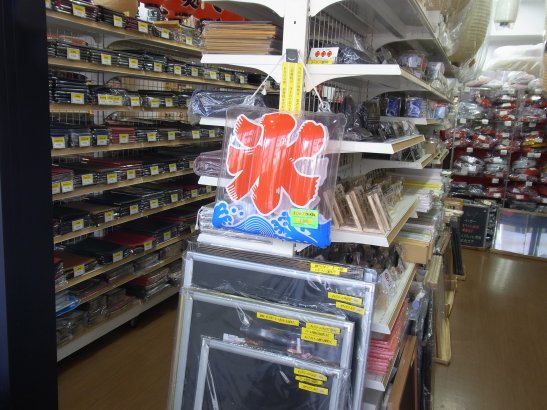
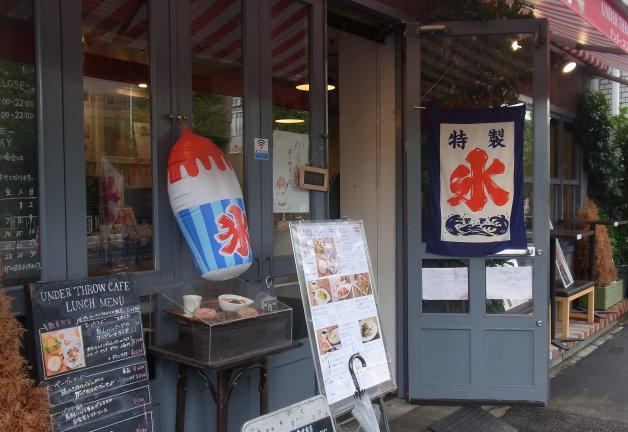
おせち料理は、奈良時代に中国から伝わった五節句の行事で出される食事に由来します。
Osechi ryori (New Year's dishues) originally comprised food made for five
ceremonies called go-sekku that were imported from China during the Nara
Period (710-94).
「節」は日本の農耕文化に中国の暦法が組み込まれた季節の変わり目となる日で、陽である奇数が重なると陰になるとして、邪気を払う必要があるため、季節の旬の食物から生命力をいただく行事が行われます。
1月1日の元旦は別格として、1月7日の人日(じんじつ)、3月3日の上巳(じょうし)、5月5日の端午、7月7日の七夕、9月9日の重陽が五節句です。
今日、おせち料理は、もっぱら正月料理を指すようになりました。
Today, however, osechi ryori is connected exclusively with the New Year.
歳神様に豊作や繁栄を願って白木の台(三方)にめでたい食べ物などをのせ、床の間に飾ったり、客に出したりする飾り物で、関西で「蓬莱飾り」、関東で「食い積み」と呼ばれていました。白米・熨斗鮑(のしあわび)・伊勢海老・勝栗・昆布・野老(ところ)・馬尾藻(ほんだわら)・橙(だいだい)などを盛り付けました。
It is closely related to seasonal decorations, such as the horaikazari
in which rice (kome), rice cakes (omochi), seaweed (kobu), kumquats (kinkan),
bitter oranges (daidai), chestnuts (kuri), spiny lobsters (Ise ebi), herring
roe (kazunoko), dried anchobies (gomane), black soybeans (kuromame), and
radishues (daikon) are placed along with other things on a wooden stand
as a New Year's offersing to the gods for a good harvest and prosperity.
蓬莱とは、中国・山東半島のはるか東方の海にあり、不老不死の仙人が住むと伝えられている島(仙境)です。
明治時代以降、重箱と呼ばれ上に重ねられる漆塗りの箱の中におせち料理を入れ、正月の3日間だけ食べられます。
Traditionally put in lacquer boxes called jubako that are stacked on top
of each other, osechi ryori is to be eaten over a period of three days.
火を通したり干したり、あるいは酢に漬けたり味を濃くするなど、日持ちする物が多い。これは歳神を迎えて共に食事を行う正月の火を聖なるものとして捉え、神と共食する雑煮をつくるほかは火を使う煮炊きをできるだけ避けるべきという風習に基づく。家事から女性を解放するためという要素があるとみる説もある
食材は冬の間の根菜や乾かしたもの、保存食などで、おせち料理は三が日は料理をしないように大晦日に準備されました。
Since food was limited during the winter to plant roots, dried, and preserved foods, osechi ryori was prepared before New Year's Eve to provide a three-day respite from cooking.
それは、三が日は水を使う仕事(料理や選択など)を一切しない伝統によるものです。
It facilitates the tradition not to do any work involving water (e.g.,
cooking and washing) for the first three days of the year.
江戸時代、五節句が庶民によって最初にお祝いされた時、おせち料理は4つの箱で出されました。
In the Edo Period, when the go-sekku were first celebrated by commoners,
osechi ryori was served in four boxes:
江戸では、一番上の箱に数の子、黒豆、ごまめ、2段目に食事の最初に酒やお茶と一緒に出される食べ物、栗きんとん、伊達巻、かまぼこ、3段目は海や川の幸で、昆布巻きや焼き魚、魚の甘露煮など、一番下の箱には野菜やこんにゃく、ゴボウ、レンコンなどが入ります。
In Edo (old Tokyo) the top box contained herring eggs, black beans, and dried anchobies; the second, food to be served with sake or tea at the beginning of a meal, such as mashed chestnuts (kinton), rolled cooked egg (datemaki), and fish cake (kamaboko); the third, food from the sea and rivers, such as rolled kelp (kobumaki), grilled fish (yakizakana) and sweet-bliled fish (kanroni); and the bottom box contained vegetables, such as debil's tongue (konnyaku), burdock (gobo) and lotus root (renkon).
おせち料理は幸運を意味する様々な食べ物を含んでいます。
Osechi ryori contains various food items that represent good fortune.
今日のおせち料理は幸運と縁起の意味を持ち続け、象徴の世界が広がっています。
Today's osechi ryori retains its good luck or engi meanings and bursts with symbolism.
数の子は卵の数が多く、また、ニシンは「二親」に通じ、五穀豊穣と子孫繁栄を願ったものです。
kazunoko - many children;
黒く日焼けするほど達者(マメ)に働けるようにと邪気を払い長寿と健康(無病息災)を願ったものです。
kuromame - labor and health (the color of a tanned laborer);
カタクチイワシを田の肥料としたことで五万俵ものコメが収穫できたとのいわれに由来しています。「ごまめ」は「五万米」であり「田作り」の名とともに五穀豊穣を願いました。
gomame - good harvest;
金団とは金色の団子という意味で、金銀財宝を意味しており金運を願ったものです。
kinton - "kin" means gold, i.e. wealth;
昆布は、「喜ぶ」の語呂合わせです。
kobu - reference to "yorobobu" neaning luck;
鯛の焼き物は、「めでたい」の語呂合わせです。
tai (sea bream) - reference to "medetai" meaning congratulatory;
巻物に似た形から文化・学問・教養を持つことを願う縁起物です。
datemaki - "maku," to roll, indicates scrolls, the development
of literature and culture;
紅白のかまぼこは、形状が初日の出の形に似ることから好まれ、赤色は魔除け、白色は清浄を意味し、紅白の色が縁起が良いとされます。
red and white kamaboko - the color mean peace;
レンコンは穴が多数ある蓮根は将来の見通しがきくという意味の縁起かつぎです。
renkon - the hokes symbolize seeing into the future;
橙の「だい」は世代を意味し、重ねることで子孫繁栄を意味しています。
daidai - "dai" means generation and twice indicates continuity of the family line;
髭が長く、腰が曲がっている様子から長寿を祈願した縁起物です。
Ise ebi (or spiny lovster) - the bent back suggests elderly people and thus a long life;
餅を食べると力がつき、新しく生命を再生させる霊力があると信じられていました。稲作の神様の象徴でもあります。
omochi - play on "mochi" meaning long lasting, or long life.
「弁当」という言葉は携帯する食事のことで、通常、特別な入れ物に詰められます。
The term bento is used for portable meals, usually packed in a special
container.
もともと弁当は、旅人が携えるおにぎりのようなシンプルな携帯食でした。
Bento originated as simple packed meals such as rice balls carried by traveller.
6~8世紀に登場した「乾飯(かれいい)」が弁当の起源で、もち米を乾燥させたものを、旅先で水や湯でふかして食べました。
やがて、それが握り飯に取って代わりました。
日本のうるち米は粘り気があるので、握って持ち運ぶのに便利でした。
日本で一般的に食べられるジャポニカ米(うるち米ともち米)は、炊いた後、冷めてしまっても比較的味が落ちにくいという特徴を持っています。
お弁当は日本人の生活に不可欠なモノです。
The bento is an essential part of Japanese life.
朝早く多くのお母さんたちは子供のためにお弁当を準備します。
In the early morning, many mothers prepare bento for her child.
彼女は単に食材を弁当箱に詰めるだけでなく、食材の彩りや形に創意工夫を凝らします。
She not only fills the bento box with ingredients, but also exercises her ingenuity in creating the colour scheme and even the shapes of the items.
桜の花の形をした型抜きを使えば、かまぼこやハムを花びらの形に切ることができます。
Using a cutter in the shape of a cherry blossom, you can cut kamaboko fish paste or ham into petal-shaped pieces.
ごはんの上に乗せれば、お弁当に素晴らしい春のアクセントを与えることができます。
Arranged over rice, this gives a bento the perfect springtime accent.
お弁当はコミュニケーションのメディアとして、食べてくれる人への思いを、作る人が表現する方法になりました。
The bento has become a medium of communication, a way for the creator to express their feelings for the person who will eat it.
弁当は、作り手の技術と想像力を表現する「食べられるキャンパス」になりました。
The bento has become edible canvase that showcase the skills and imagination
of their creators.
江戸時代、花見弁当は当時ご馳走とされた様々な食べ物が詰められていました。
During the Edo period, a bento for a blosson-viewing party contained a
variety of foods that were considered luxuries in those days.
駅で売られている弁当は駅弁と呼ばれています。
The bento sold at train stations are called ekiben.
駅弁の発祥は、1885(明治18)年宇都宮駅で発売された、おにぎりと沢庵漬けを竹の皮に包んだ弁当とされています。
弁当専門店やコンビニエンスストア、スーパー、百貨店などで持ち帰りの弁当が販売されています。
コンビニエンスストアでは様々な弁当が開発されています。
Convenienc store chains are constantly developing new varieties.
略式の懐石料理として十字に仕切った弁当箱に様々な料理を入れたものを松花堂弁当と言います。
懐石料理は茶会でお茶の前に出される軽い食事です。
Kaiseki ryori is a light meal served before a tea ceremony.
会席料理は宴会用の料理です。
Kaiseki ryori is a Japanese banquet meal.
能や歌舞伎を観覧する人々が幕間(まくあい)に特製の弁当を食べていたため、「幕の内弁当」と呼ばれるようになったと考えられています。
幕の内弁当は会席料理から発達したものです。
Youshokuは文字通り「Westerm food」を意味しますが、欧米ではこのような食べ物を見つけることはできません。
Yoshoku literally meas ‘Westerm food’, but you won't find food quite like
this in the West.
もちろん、伝統的な日本料理でもありません。
It's certainly not traditional Japanese cuisine, either!
洋食は日本独自のハイブリッド料理です。
Youshoku is a hybrid that's unique to Japan.
ケチャップ風味のスパゲティは、日本では「スパゲティ・ナポリタン」と呼ばれています。
Ketchup-flavoured version of spaghetti is known in Japan as ‘spaghetti
napolitan’.
名前はイタリアの都市であるナポリから派生していますが、イタリアで「スパゲッティ・ナポリタン」と呼ばれる料理を見つけることはできません!
Although the name is deriverd from the Italian city of Naples, you'll
never find a dish called that in Italy!
それは実際には第二次世界大戦後に考案された日本のレシピです。
It's actually a Japanese recipe invented after World War II.
「オムライス」という名前も日本で考え出されました。
The name om-rice was also dreamed up in japan.
それは英語の「オムレツ」と「ライス」から来ています。
「オムライス」は時々、日本人にとても人気があるビーフカレーや「とんかつ」と一緒に提供されます。
“Om-rice”
is sometimes served with beef curry and “Tonkatsu とんかつ Fried pork cutlet” that are very popular among the Japanese.
ほとんどの「洋食」は牛肉や豚肉使っています。
Most yoshoku dishes include beef or pork.
昔から、米と魚は日本の食文化の中心的な要素でした。
Since anciant time, rice and fish have been the central components of
Japanese food culture.
仏教の影響の結果、長い間肉を食べる習慣はありませんでした。
As a result of Buddhist influence, for a long period there was no custom
of eating meat.
しかし、アメリカのペリー提督と彼の「黒船」が1853年に到着して、19世紀半ばに状況が変化し始めました。
But the situation began to change in the middle of the 19th century, following
the arrival of US Commodore Perry and his ‘Black Ships’in 1853.
「幕府」は鎖国政策を断念し、日本は肉の消費の促進を含む西洋化のプロセスを始めました。
The “Bakufu
幕府
Shogunate” abandoned its closed-door policy and Japan began a
process of westernization, including the promotion of meat consumption.
しかし、一般の日本人にとって、この新しい食事は、根深く浸透していた慣習に反していました。
But for ordinary Japanese people, this new way of eating went against
deeply ingrained custom.
肉食に対する世間一般の抵抗を和らげる最初のレシピの1つは、食欲をそそる鍋で調理された牛肉でした。
One of the first recipes to soften the general resistance to meat-eating
was beef cooked in a savory hotpot.
それは、何世紀にもわたって日本料理の重要な要素であった味噌で味付けされました。
It was seasoned with miso, which has been a key part of Japanese cuisine
for centureies.
このこよなく愛されている材料を、なじみのない味と食感の牛肉とブレンドすることで、人々は肉を食べるという考えに慣れることができました。
Blending this well-loved ingredient with the unfamiliar taste and texture
of beef helped people to become accustomed to the idea of eating meat.
西洋の食材と伝統的な日本料理がうまく組み合わさったこの初期の例は、日本食の多様化を助ける創造的な動きの口火を切りました。
This early example of the successful marriage of Western ingredients with
traditional Japanese cuisine set in motion a creative movement that helped
to diversify the Japanese diet.
それはついに独特で大人気のカテゴリーである「洋食」の開発につながりました。
It eventually led to the development of the distinctive and highly popular category, “youshoku”.